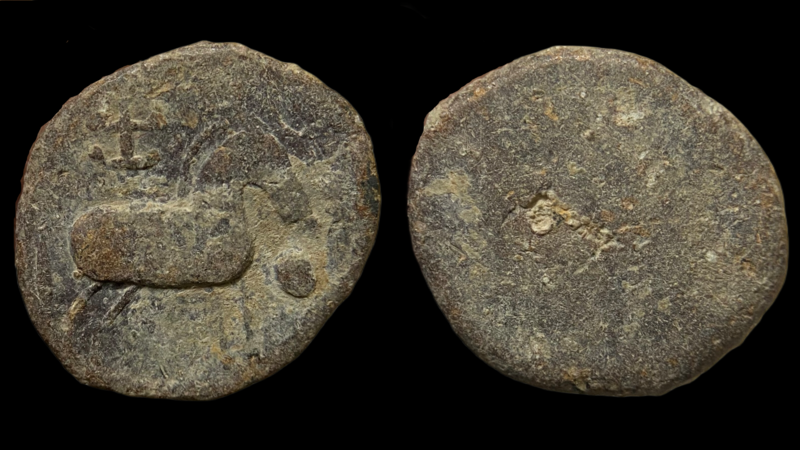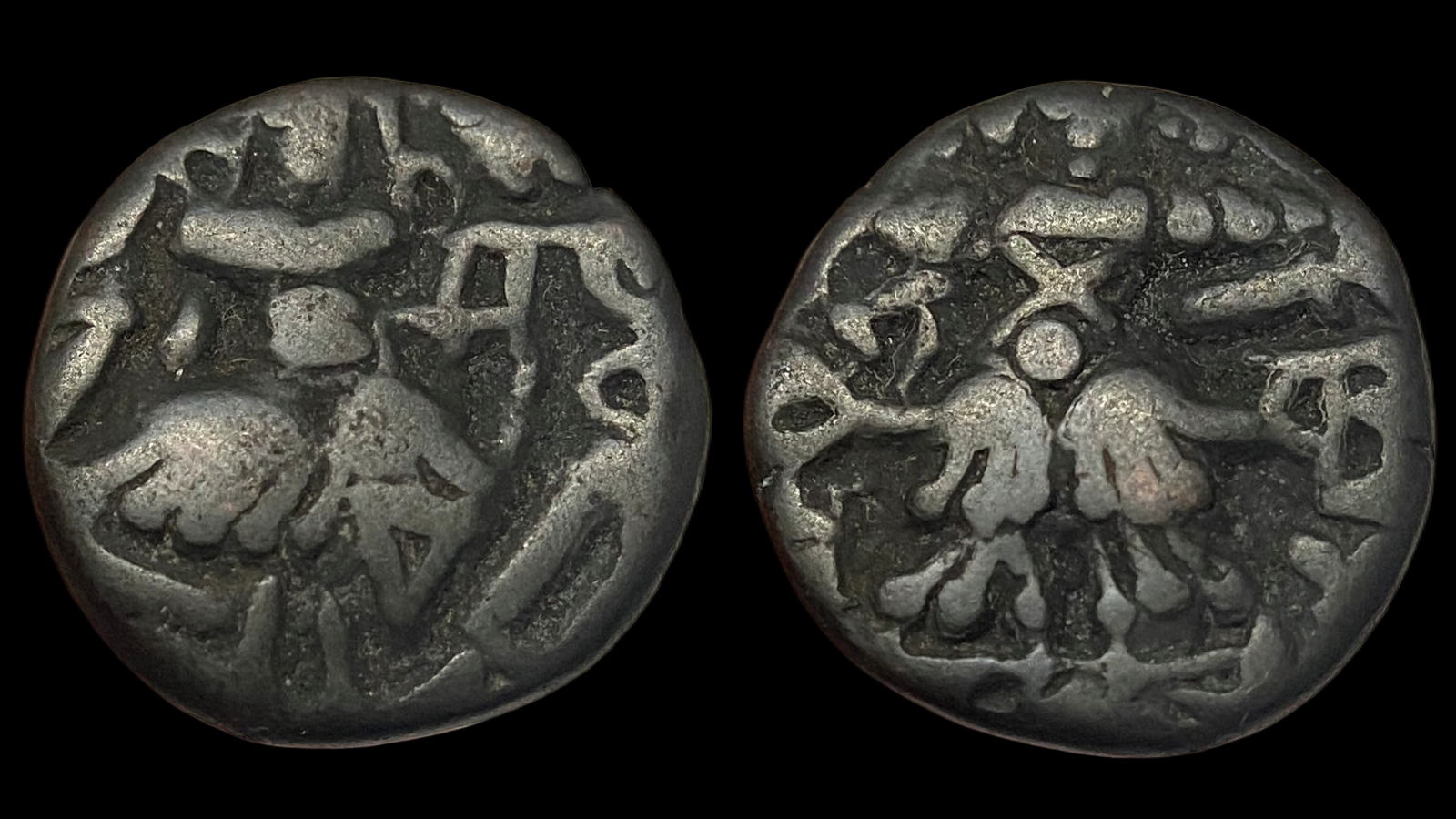Maurya Empire, Sunga Kingdom (187-75 BC), Cast Copper Kakani
₹500.00
Maurya Empire, Sunga Kingdom (187-75 BC), Cast Copper Kakani
Issue Of : Sunga Kingdom
Era : (187-75 BC)
Denomination : Copper Kakani or 1/4 KArshapana
Weight : 2.10 grams
Diameter : 12.7 mm
Reference Number : (Mitch # ACW 4366-4370)
Obverse :
Elephant with rider left/right.
Reverse :
Three arched hill with crescent.
Comment :
The Shunga dynasty was the seventh ruling dynasty of Magadha and controlled most of the northern Indian subcontinent from around 185 to 73 BCE. The dynasty was established by Pushyamitra, after taking the throne of Magadha from the Mauryas. The Shunga Empire’s capital was Pataliputra, but later emperors such as Bhagabhadra also held court at Besnagar (modern Vidisha) in eastern Malwa. This dynasty is also responsible for successfully fighting and resisting the Greeks in Shunga-Greek War.
Pushyamitra ruled for 36 years and was succeeded by his son Agnimitra. There were ten Shunga rulers. However, after the death of Agnimitra, the second king of the dynasty, the empire rapidly disintegrated: inscriptions and coins indicate that much of northern and central India consisted of small kingdoms and city-states that were independent of any Shunga hegemony. The dynasty is noted for its numerous wars with both foreign and indigenous powers. They fought the Kalinga, the Satavahana dynasty, the Indo-Greek Kingdom and possibly the Panchalas and Mitras of Mathura.
Art, education, philosophy, and other forms of learning flowered during this period, including small terracotta images, larger stone sculptures, and architectural monuments such as the stupa at Bharhut, and the renowned Great Stupa at Sanchi. The Shunga rulers helped to establish the tradition of royal sponsorship of learning and art. The script used by the empire was a variant of Brahmi script and was used to write Sanskrit.
The Shungas were important patrons of culture at a time when some of the most important developments in Hindu thought were taking place. Patanjali’s Mahābhāṣya was composed in this period. Artistry also progressed with the rise of the Mathura art style.
The last of the Shunga emperors was Devabhuti (83–73 BCE). He was assassinated by his minister Vasudeva Kanva and was said to have been overfond of the company of women. The Shunga dynasty was replaced by the Kanvas. The Kanva dynasty succeeded the Shungas around 73 BCE.
Out of stock
| Payment | Most Secure Payment System from Razorpay |
|---|---|
| Photo | Photo Shown is of the Coin you will receive |
| Shipping | We love your Order ! We will send you the coin at our expense -;) |
Only logged in customers who have purchased this product may leave a review.














Reviews
There are no reviews yet.